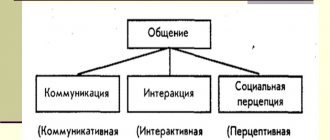In the process of business communications, various contradictions arise—communication barriers. A set of rules—the norms of business communication—helps to overcome them. These norms are characterized by the use of certain vocabulary, speech patterns and professionalisms. The features of such business communication are regulated by language norms.
Here are some of them:
- Avoid long words and complex sentences.
- Use definite personal pronouns more often (I - we, you - you).
- Use affirmative statements.
- Give up slang.
- Combine affirmative sentences with interrogative ones.
- Give preference to open-ended questions.
- Consider the lexical meaning of the words used and their stylistic affiliation.
- Eliminate tautologies from your speech.
Language norms are dictated by the style of business communication. Speech styles of business communication are a set of techniques and methods of behavior. The formation of style is influenced by a person’s character and activity, mastery of business communication techniques, and a specific situation.
There are several classifications of speech styles in business communication. Let us denote the following:
- Authoritarian. Diktat and total control.
- Democratic. Joint search for solutions to problems.
- Liberal. Irresponsibility and non-interference are signs of this style.
Perceptual barrier
Perceptual barrier - barrier of perception. The mood in which we are spoken to directly affects the effectiveness of communication.
Problem
An indifferent tone and disinterest conveyed by body language make the interlocutor skeptical about the success of the conversation and discourage him from having a conversation with you. The same goes for people who explain their point of view without respect or with hard-to-conceal or not-at-all hostility.
Solution
Start the conversation on a positive note and try to maintain it throughout the conversation. Use appropriate gestures, smile, and remember to make eye contact with your interlocutor.
Behavioral barrier
The opinion of others about us directly affects the level of assimilation of our words and the likelihood of effective dialogue. Based on his attitude towards you, the interlocutor may abstract himself from the topic of the conversation or partially ignore the information.
Problem
A pompous tone is the cause of hostility on the part of the interlocutor. If all information is passed through the lens of condescension, it harms communication and spoils the impression of the speaker. Low self-esteem can also cause a barrier.
Solution
Treat your interlocutor as your equal. Be sure to praise the person for a job well done, even if you think you could have done it better yourself. Don't forget about eye contact and a smile.
The language barrier
A language barrier arises not only between speakers of different languages, but also between people with different levels of competence in any field.
Problem
If the interlocutor uses unfamiliar words in his speech, you are unlikely to be able to understand him. Using jargon when talking to interns will not ensure understanding on their part and will instill in them uncertainty about their own suitability. If you explain the solution to a problem to a child the same way you would tell an adult, this will also lead to a sad result: the child will not be able to solve a similar problem again, his ability to think and get to the truth gradually will suffer.
Solution
Simplify your speech to the level of the interlocutor, without showing the condescension characteristic of people with high self-esteem.
Communication barriers and techniques for overcoming them
Today, new economic and social conditions have highlighted the need to improve communicative competence, since high speech culture and a developed economy are inseparable from each other. Speech is a person’s best passport. And this, in turn, requires the development of the communication capabilities of a modern specialist [1; 2].
Forms of interpersonal communication are varied. These include a brief, fleeting conversation, a detailed heart-to-heart conversation, an explanation of one’s demands, a dispute on a number of issues, and an attempt to achieve agreement on a problem. However, in the process of communication, difficulties and misunderstandings often arise. They may be caused by communication barriers that arise in the process of managerial communication.
Speech, any kind of information, has always been and is a way of suggesting something. However, we often witness counter psychological activity called counter-suggestion, i.e. a person seems to be protecting himself from the inexorable effect of another person’s speech. The counter-suggestion mechanism erects numerous barriers to speech and information.
Communication barriers are psychological difficulties that arise in the process of communication, causing conflicts, or preventing mutual understanding or interaction [3; 4].
In this regard, the purpose of the study is to identify communication barriers and techniques for overcoming them. The study showed that the barriers that arise in organizational communications include insufficient attention to the importance of communication, distortion of messages, information overload, and unsatisfactory organizational structure.
In the process of business communication, three communication barriers and their various modifications may arise: “authority”; "avoidance"; "misunderstanding". The first two provide protection from the source of information, the latter protection from the message itself.
Communication barriers also include: incompetence; inability to express one's thoughts; poor speaking technique; inability to listen; modality barrier; character barrier [5].
The reactions given above have a destructive effect on business communication, cause irritation and indignation among interlocutors, and create a barrier in their relationships. To overcome communication barriers you need to:
- cope with irritation, speak slowly and quietly;
- develop your abilities, try to restrain yourself in an attempt to interrupt your interlocutor, to humiliate his dignity. Give him a chance to speak before you respond. By your actions, emphasize that you are interested in listening to him. If the information received is not enough for you, ask for clarification of what is not entirely clear;
- show full attention to your partner. An occasional nod, exclamation, or remark is sometimes enough to indicate interest;
- retell the speaker’s statement; if the interlocutor has already spoken, ask if that’s what he meant. This guarantees against misunderstandings in relationships;
- refrain from hasty conclusions and assessments, try to understand the point of view of your interlocutor;
- do not focus on the conversational characteristics of the interlocutor, on his manners and means of expression, look for the essence of the statement, the main content of the information received;
- Don’t be a hypocrite and don’t pretend. As soon as the partner notices this, his thoughts become confused and he loses the main idea of the statement. Don’t prepare yourself in advance for the conversation to be uninteresting;
- no distractions. A bad conversationalist is distracted by a phone call, people walking around who can be seen through an open door, and a magazine in the hands of a partner. It is necessary to concentrate your attention only on the words of the interlocutor;
- look for the true meaning of the interlocutor’s words. He was not able to put all the information into words. Speech is supplemented by changes in tone and color of the voice, facial expressions, gestures, and movement;
- follow the main idea, do not be distracted by particular facts. Analyze which facts and events are main and which are secondary. Weigh their information value. Compare them to understand what idea is hidden behind them;
- adjust the pace of thinking and speech. According to scientists, the speed of thinking is 3-4 times faster than the rate of speech [6; 7].
To be an effective listener or to have an attractive image, to say what interests the interlocutor, means to master the techniques of an understanding listener. Such techniques usually include:
- attentive silence, minimum answers;
- asking the speaker for clarification;
- repeating the interlocutor’s thoughts in your own words;
- summarizing the main thoughts of the interlocutor;
- the desire to reflect in one’s own words the feelings of the interlocutor.
A business conversation is not a formal event. This is effective communication between employees, that is, obtaining business operational information, joint search for solutions, effective development of working ideas and plans; control and coordination of already started business events, maintaining business contacts; stimulating the business activity of employees and, finally, effective work on the image. A business person should remember a few rules for maintaining an informal conversation. In such a conversation, you cannot raise fateful, political topics that can touch the heart of your interlocutor; do not provide information about unknown sources of information or unverified facts; do not talk about dreams, predictions, mystical visions; do not talk about certain persons, about the topics of your family and loved ones; It is not recommended to show family albums or touch on populist issues (about prices, dinners, illnesses, etc.). The most preferred topics for conversations at informal dinners and receptions: about books, funny stories, about hobbies, about trips, excursions, about theatre, music, painting, films - all genres of art, about sports - about everything that goes beyond the boundaries of the state, business, family topics [8; 9]
The task of imagery is to develop communication technologies and spiritual and moral development of the individual.
In conclusion, we note that mastering the art of communication is necessary for every person, regardless of what type of activity he is engaged in or will be engaged in. Anyone who strives to achieve success in life, successfully move up the career ladder, and communicate effectively and competently with people must master certain knowledge and skills in the field of interpersonal and business communication [10; eleven].
Emotional barrier
An emotional barrier arises from insecurity, anger, sadness, or even excessive joy. Problems at home can impact work communications, and vice versa.
Problem
When experiencing emotional stress, we ourselves do not notice that we are missing some information and how our ability to analyze and reason suffers. When we are out of sorts, we become irritable towards the words of the interlocutor, and excessive joy during a work dialogue can lead to the approval of a frankly bad idea.
Solution
Rise above your emotions and don't let them affect your interactions with other people. When in a state of emotional stress, try to conduct a neutral conversation with your interlocutor.
How to overcome a psychological barrier
If you are increasingly monitoring the presence of psychological barriers, you should definitely think about overcoming them.
If you don’t work with this, you will soon discover such character traits in yourself as:
- lack of initiative;
- compliance;
- inability to defend one's own opinion.
Related article: How to forgive an offense - the best technique for forgiving an offense
Overcoming a psychological barrier occurs simultaneously with getting rid of internal pressures.
- Learn to identify your feelings. When building a psychological barrier, ask yourself the question: “What am I feeling at this moment?” At the next stage, work on yourself, on overcoming the identified emotions.
- Attend training on overcoming a certain psychological barrier. Group therapy led by a psychologist can eliminate the root causes.
- Have cliché phrases in your vocabulary that can be easily inserted into a conversation on any topic.
- Don't be afraid to ask questions to understand your interlocutor correctly. Ask again and clarify if you do not understand the topic of conversation.
- Constantly engage in self-development and personal growth, thereby raising self-esteem.
Cultural barrier
When communication occurs between representatives of different cultures, the likelihood of a cultural barrier occurring is high. But cultural differences are manifested not only in communication with foreigners or representatives of other faiths.
Problem
Incorrect communication with a person of a different nationality or religion may offend his beliefs. Stories about Friday night parties can ruin the mood of a person for whom alcohol is contraindicated. Trying to explain to an older person the meaning of a popular YouTube video may be met with misunderstanding.
Solution
Try to study the interlocutor in advance and conduct the conversation as tactfully as possible. If there is a high risk of blurting out something wrong, try to explain to your interlocutor face to face that you are not too familiar with his culture.
Gender barrier
The reason for misunderstanding may be differences in communication and thinking between men and women. Women tend to think intuitively, while men tend to think logically. Thus, women like to talk about people and emotions, while men focus on something physical and measurable. These stereotypes, of course, do not apply to everyone.
Problem
What is acceptable with a man may be unethical with a woman. A male boss may be skeptical of women's professional skills, allowing stereotypes to interfere with communication. This way, he risks not only offending his interlocutors, but also misassessing the work situation.
This effect also works in the opposite direction: the attitude towards the words of a charming woman may be unfairly inflated.
Solution
Do not divide your interlocutors by gender. Treat all genders as equals.
Bibliography
- Izmailova M.A. Business communication: Textbook / M.A. Izmailova. – M.: Publishing and Trade, 2009. – 252 p.
- Igebaeva F.A. The role of communications in the management system. In the collection: social technologies in human resource management: Russian and foreign experience. Collection of materials of the I International Scientific and Practical Conference. 2004. pp. 116 – 119.
- Igebaeva F.A. Business communications in the formation of communicative competence of a modern agricultural university specialist. //Replication of the culture of society in the context of professional education. Book 2. Collective monograph. – Georgievsk: Georgievsk Technical Institute, 2013. – P.78 –113.
- Igebaeva F.A. Modern head of the agro-industrial complex: what he should be (using the example of the Republic of Bashkortostan) // Agrarian Bulletin of the Urals. All-Russian Scientific Agrarian Journal, 2014, No. 6 (124), P.105 – 108.
- Igebaeva F.A. Business communications: workshop. – Ufa: Bashkir State Agrarian University, 2013. – 176 p.
- Igebaeva F.A., Shakirov I.R. Speech as a means of forming professionally oriented communication. In the collection: Socio-economic aspects of the development of a modern state. Materials of the international scientific and practical conference. 2014. pp. 96 – 98.
- Igebaeva F.A. Management style is the main characteristic of a manager’s activity // Science today: theoretical aspects and practice of application: collection of articles. articles. International scientific and practical conference in 9 parts. Part 8. – Tambov: Publishing house TROO “Business-Science-Society”, 2011. – 344 p.
- Igebaeva F.A. On the issue of increasing the efficiency of management activities at agricultural enterprises // Socio-political sciences. International interuniversity scientific peer-reviewed journal. Moscow, Publishing House “Yur-VAK”, 2013, No. 3 – P.13 – 15.
- Igebaeva F.A. “Business communications” in the formation of professional competencies of a modern graduate of an agricultural university // Agrarian Bulletin of the Urals. All-Russian Scientific Agrarian Journal, 2013, No. 11 (117), P.60 – 62.
- Kamardina G.G. Psychological difficulties of communication: basics of psychotechnology: Textbook / G.G.Kamardina. – Ulyanovsk, 2000. – 52 p.
- Igebaeva F.A. Business communication: workshop. – Ufa: “Bashkir State Agrarian University”, 2010. – 112 p.











